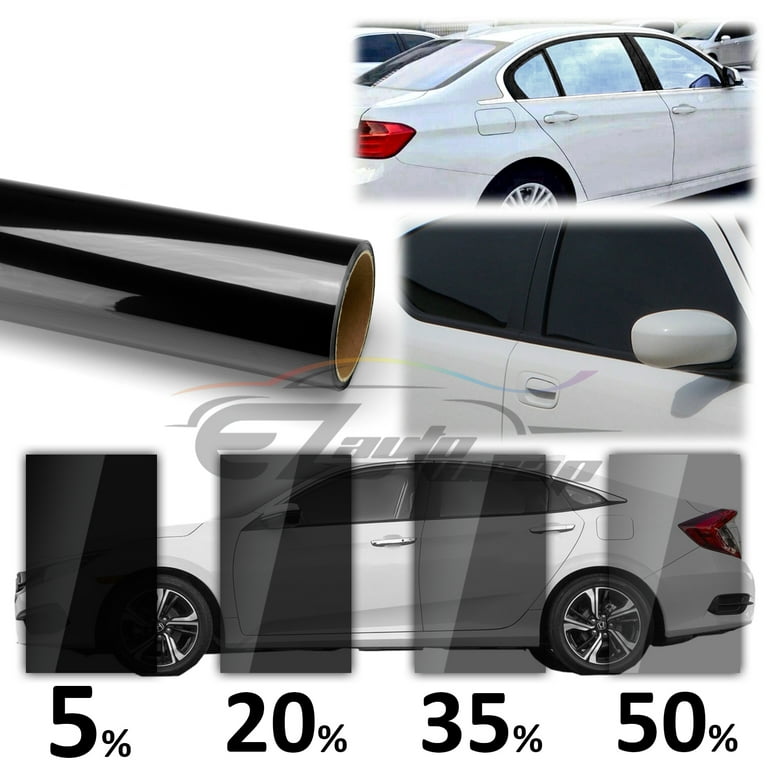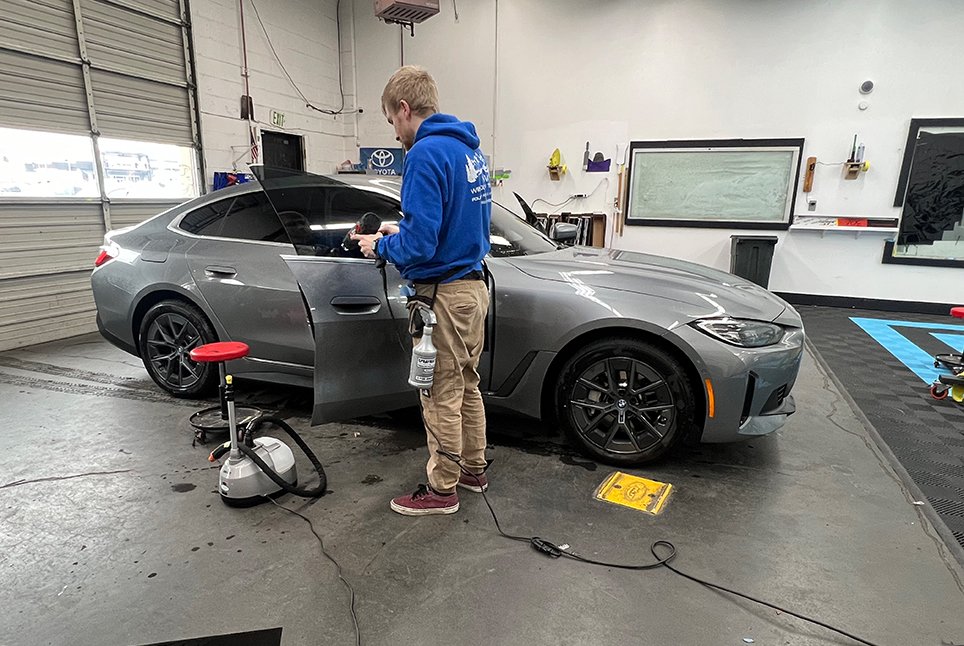Custom-made Automobile Window Tinting Providers for a Streamlined and Fashionable Appearance
Wiki Article
Window Tinting Rules and Standards: What You Required to Know Prior To Tinting Your Vehicle
Prior to waging window tinting for your automobile, it is important to familiarize on your own with the diverse legislations and standards that regulate this practice throughout different states. These guidelines determine the permissible degrees of color darkness, often determined by noticeable light transmission (VLT) percentages, and consist of certain specifications for front windshields intended at guaranteeing road safety. Additionally, specific jurisdictions might provide clinical exceptions for people with qualifying problems. Understanding these complexities can save you from possible legal implications, however what are the certain guidelines in your state?Overview of Window Tinting Laws
Window tinting legislations are regularly subject to variant throughout various territories, showing regional regulations and safety and security considerations. These laws dictate the allowable degrees of color darkness and reflectiveness on lorry home windows, making certain that vehicle drivers keep adequate presence while additionally protecting against damaging UV rays and heat.A lot of guidelines identify window tinting based upon the Visible Light Transmission (VLT) percent, which shows the quantity of light that can travel through the window. Normally, reduced VLT percents indicate darker tints. Legislations usually separate in between the front, side, and back windows, with stricter restrictions applied to the front windshield to improve security for both the driver and other roadway individuals.
Conformity with window tinting policies is important, as violations can result in penalties, obligatory removal of the tint, and potential boosts in insurance costs. It is necessary for automobile proprietors to acquaint themselves with regional legislations prior to continuing with window tinting setups.
State-by-State Tint Laws
Comprehending the details home window tinting laws in each state is vital for vehicle proprietors looking for to abide by the law. Each state in the united state has actually established its own collection of regulations governing window tinting, which can vary considerably. These laws typically determine the permitted levels of color darkness, the kinds of windows that can be tinted, and any clinical exceptions that might apply.For example, states like California have rigid limitations on tint darkness for front windows, while others, such as New Mexico, may permit darker tints. Additionally, particular states mandate details visibility portions for numerous windows, including the windscreen, front side home windows, and rear home windows. It is critical for car proprietors to familiarize themselves with their state's regulations to avoid possible penalties or charges.
Additionally, some states might need a certification sticker label to be put on colored windows, suggesting compliance with state laws. Failure to stick to these policies not just takes the chance of lawful effects yet can also affect safety and security and exposure while driving. Therefore, vehicle owners ought to carry out detailed research or speak with local authorities to ensure complete understanding and compliance with state-by-state color laws.
Allowed Tint Types and levels
Numerous vehicle proprietors may be stunned to find out that enabled tint degrees and types differ commonly throughout different states. Each state has actually established its very own regulations relating to the allowable darkness and reflectivity of home window tint, typically measured by Visible Light Transmission (VLT) portions. VLT describes the amount of light that can travel through the colored windows; hence, a reduced portion suggests a darker color.
In addition, the sorts of color products allowed can differ, with some states banning metallic or mirror-like finishes. It is important for vehicle proprietors to acquaint themselves with their state's details legislations to guarantee conformity. visit the site Non-compliance can result in fines, mandatory elimination of the tint, or various other lawful consequences, making it critical to understand these guidelines prior to continuing with installation.
Medical Exemptions for Tinting
While not all states offer allowances for medical exceptions concerning window tinting, those that do recognize the requirement for specific individuals to enhance visibility and convenience because of clinical conditions. Different medical conditions, such as lupus, skin cancer cells, and particular eye disorders, can provide individuals specifically conscious sunlight. These people may call for darker tints to shield themselves from dangerous UV rays and glare.
It is necessary to note that also with a clinical exception, there may still be limitations on the level of color permitted. Compliance with state legislations makes certain that individuals are both secured and within lawful limits. Those considering medical exemptions should call their regional Division of Electric motor Autos or comparable authority to understand the procedures and needs essential to look for an exemption effectively.
Penalties for Non-Compliance
Failing get redirected here to abide by home window tinting laws can bring about substantial fines, which vary by state. Police are encouraged to issue citations for automobiles that do not follow the defined tinting guidelines. These penalties generally include fines, which can range from moderate total up to a number of hundred dollars, depending upon the extent of the violation and the state concerned.In some jurisdictions, duplicated offenses might lead to escalating penalties or added charges, such as mandatory court appearances. Moreover, non-compliance might require the removal of prohibited tinting, frequently at the owner's expenditure. In extreme situations, habitual offenders may deal with suspension of their lorry enrollment up until conformity is accomplished.
Furthermore, insurance policy implications may occur from receiving several citations for home window color violations. Insurers might check out such offenses as a sign of riskier actions, potentially leading to boosted premiums or trouble in protection.
To prevent these charges, it is critical for vehicle owners to acquaint themselves with their regional window tinting legislations and make sure that their automobile complies (Window Tinting). This aggressive method not just stays clear of legal implications but also promotes roadway safety
Final Thought

A lot of guidelines categorize window tinting based on the Visible Light Transmission (VLT) percent, which suggests the quantity of light that can pass via the home window. Conformity with home window tinting laws is critical, as infractions can result in fines, compulsory elimination of the tint, and possible boosts in insurance coverage costs.Understanding the certain window tinting guidelines in each state is vital for automobile proprietors seeking to conform with the regulation. These regulations commonly determine the allowable levels of color darkness, the kinds of home windows that can be tinted, and any kind of clinical exemptions that might use.
For circumstances, states like The golden state have rigorous restrictions on color darkness for front my company windows, while others, such as New Mexico, may allow darker colors.
Report this wiki page